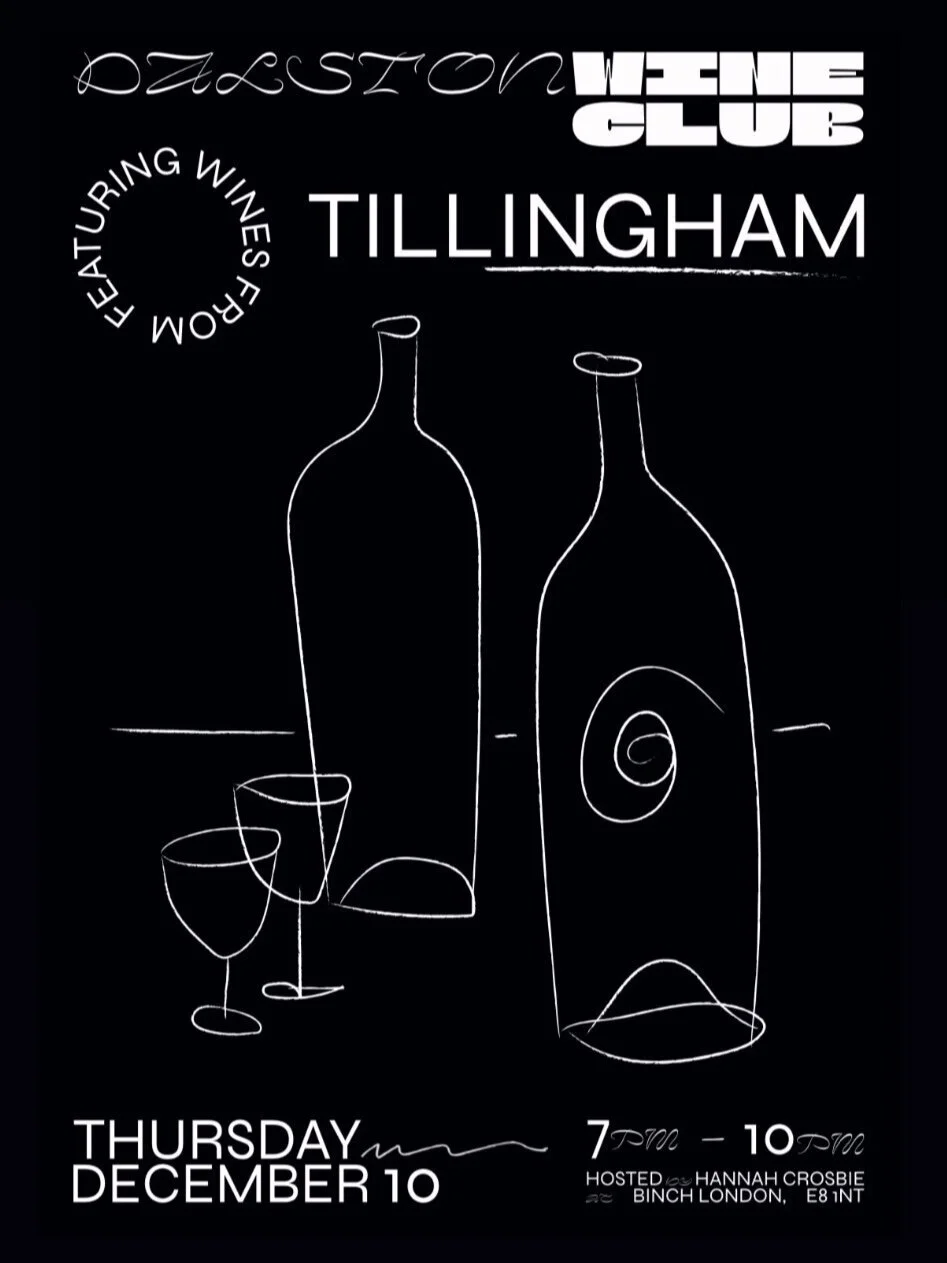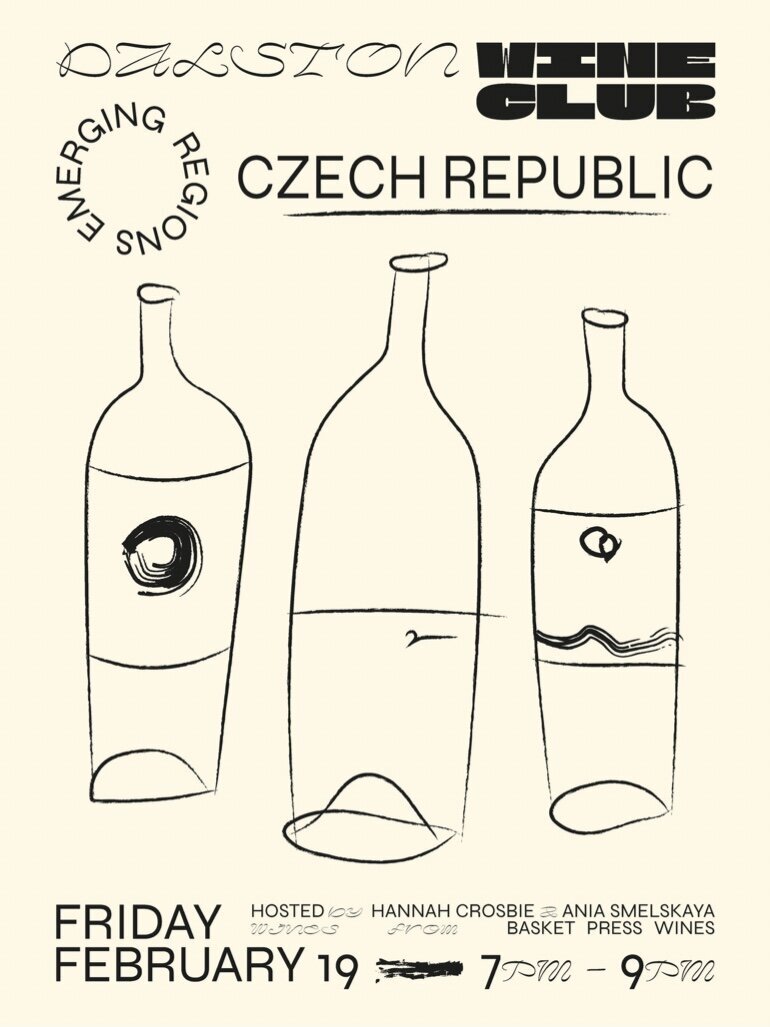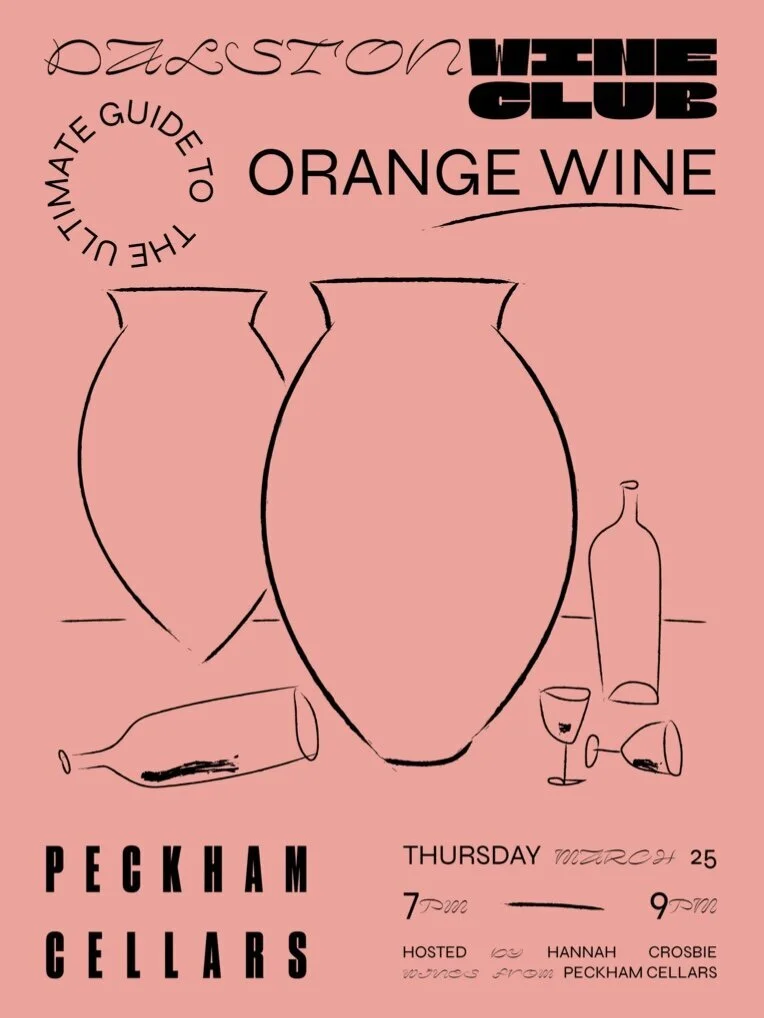Say hello to hannah, founder of Dalston Wine Club
How did you get started as a Copywriter?
Copywriting is something that happened quite organically for me. I’ve always been a writer and an even bigger reader, and anyone will tell you that that’s the first step to writing well. I started out in a few marketing roles, but I found storytelling around brands very fascinating. Soon, I realised that I could write something really quite good in much less time it took for my peers, that’s when I realised that there might be something in it. Since then, it’s been my main focus and I loved devoting serious time to other aspects of copywriting, like getting in-depth with understanding a brand's TOV, to using it strategically to achieve brand goals.
Why wine?
Wine is something that happened in tandem with the writing, but it wasn’t until later that I connected the dots between the two. My interest in wine spawned from when I worked in fine dining, and how it could alter the perception of a dish and really elevate a meal. I continued to study wine for a few years, but it wasn’t until I got involved with the amazing London wine scene that I felt confident to branch out on my own and do my own thing.
Tell us about how you write for wine? How do taste, touch, and smell all impact brand perception?
Wine is one of those things that is exceptionally hard to write about. How do you convey very physical and evocative sensations like smell and touch into good commercial copy? For many, buying a wine means buying into a story: maybe something about the producer and the methods they use intrigue them, or perhaps the region it’s from has a really interesting history. All of those things will impact a customer's decision, so it’s important to note all of them when you’re trying to write good commercial copy.
You have supported us with your professional skills and expertise. Tell us about the key pillars that you kept in mind when writing for Camelēr Spice Co & Süss Cake Studio when crafting their copy.
I think getting a good grasp of the story behind the brands really helped me to craft copy. Once you get a real sense of what, who, and — most importantly — why, the story flows naturally.
Tell us about Dalston Wine Club
Dalston Wine Club is a monthly event series for young people who aren’t professionals in the wine industry but who want to learn more about wine. As my following has started to grow, more and more people were asking me where they could go as young enthusiasts to taste wine in a casual, non-intimidating setting. And I realised that there kind of wasn’t. I realised there was a need for an inclusive space where young people could go to taste a lot of great wines for the same price as a fancy bottle. Hopefully, Dalston Wine Club fills that space.
Even as someone who’s in the industry, I sometimes find it intimidating that I’m saying or doing the right thing, where something as ubiquitous as wine shouldn’t be shrouded in mystery. We’ve now invited about 300 people to the wine clubs so far. so it shows that there’s a real hunger for it. I can’t wait to see where it goes next.
How do you use your copywriting background to propel Dalston Wine Club?
The way I approach copy feeds into this idea of making wine accessible. The industry is famous for having a really unapproachable lexicon, with only a few being able to speak it. So whenever you start to use it, you switch everyone else off — it’s almost like a language barrier. Breaking it down and communicating about wine in more of a practical and casual way really helps to pull back the curtain on it. It’s been crucial for my success on social media, but it’s even more important when you’re chatting with people in person
What tips do you have for building a brand through copywriting?
I think that before you begin to develop absolutely anything, you need to underpin your core brand values. Without these, you’ll be writing waffle, your copy can come across as unfocused, and you may even contradict yourself in your communications. Define at least three values: these should be linked to your brand’s purpose. If you have really streamlined brand values then crafting a TOV will happen naturally.
How important is defining your audience to this?
It’s crucial. I’ve seen many instances where the audience a brand is making a real effort to communicate with isn’t the audience that’s going to eventually buy their product. I think with this, you need to be realistic with your expectations. You might really want to communicate with a specific type of person, but if your service or product isn’t something they’d ever use — what’s the point? Defining your audience in this way is essential, because if you’re saying the wrong thing to the wrong people, you may as well be talking to an empty room.
I’d advise holding a focus group for brutally honest feedback (try it with your ideal audience and also with your friends and family — they will always give the most brutal opinions). Take everything they say into consideration, especially if it’s not what you want to hear. Once you’ve really defined your audience, you need to think about how they want to be spoken to. For instance, if your audience is business professionals above 40, they may appreciate being spoken to knowledgeably and authoritatively. If you’re speaking to women in their 20s, this may be completely different, but it depends on what kind of service or product you’re offering.
You often talk about how important an editorial strategy is for brands, can you explain what you mean by this?
I think telling stories is the oldest form of entertainment and persuasion. A great story can really form a bond between a brand and a customer. As an extension of this, having an editorial side to your overall brand strategy is important to make your brand seem more human. This is especially important if you’re focused on selling products, it softens your brand image and puts the focus on people, rather than commerce. Although creating a community has now become a total cliché, the intention behind it is still really important
Best tip for a new wine/drinks brand?
Copywriting aside, make sure there is an absolute need to exist, especially if you plan on selling something already on the market. It may be obvious, but consider what makes your brand different. Make sure it solves a problem or fills a genuine need, then you won’t have to try as hard to get people to buy into your idea.
As a Copywriter, you’re not always writing exciting stories. How can you portray TOV in something as simple as a product description?
I’m a big advocate for getting one person's eyes on everything a brand writes, to ensure consistency. Even something as seemingly simple as a product description or CTA can really tie in your TOV and weave a brand’s story together. It’s all part of the journey you take your customer on and how you can consolidate your brand through copy.
Is there anything you as a copywriter tend to do that you think is different from other writers?
The storytelling and genuine love of people definitely set me apart as a writer. Aside from that, my sense of humor. I don’t take myself too seriously — in that same way, I don’t think any brand should either.
What advice do you have for other creatives who want to pursue a career in copywriting?
Read and write whenever possible, even if you’re currently doing something else to earn your money. This could be writing for a blog or pitching pieces to magazines —both of those things really helped me hone my writing style.
Also, don’t be afraid to say no to working for free if you can’t afford to. The odd bit of writing here and there is fine, but the more you work for free the more it’s subconsciously instilled in you that there’s literally no value in your work. Learn professional boundaries and know when to say ‘thanks, but no’.
Sign up to Hannah’s weekly newsletter The Digestif
Follow Dalston Wine Club






